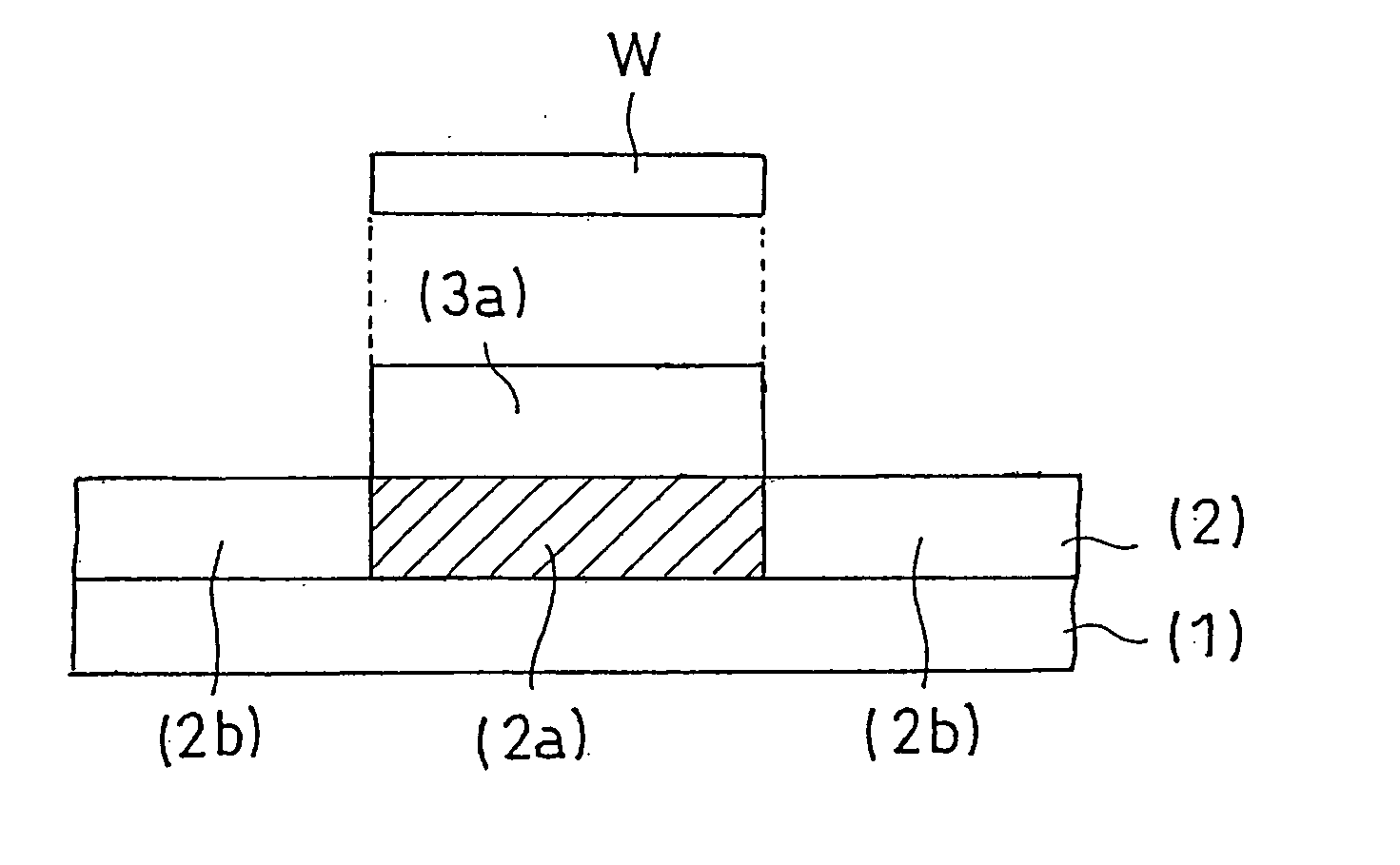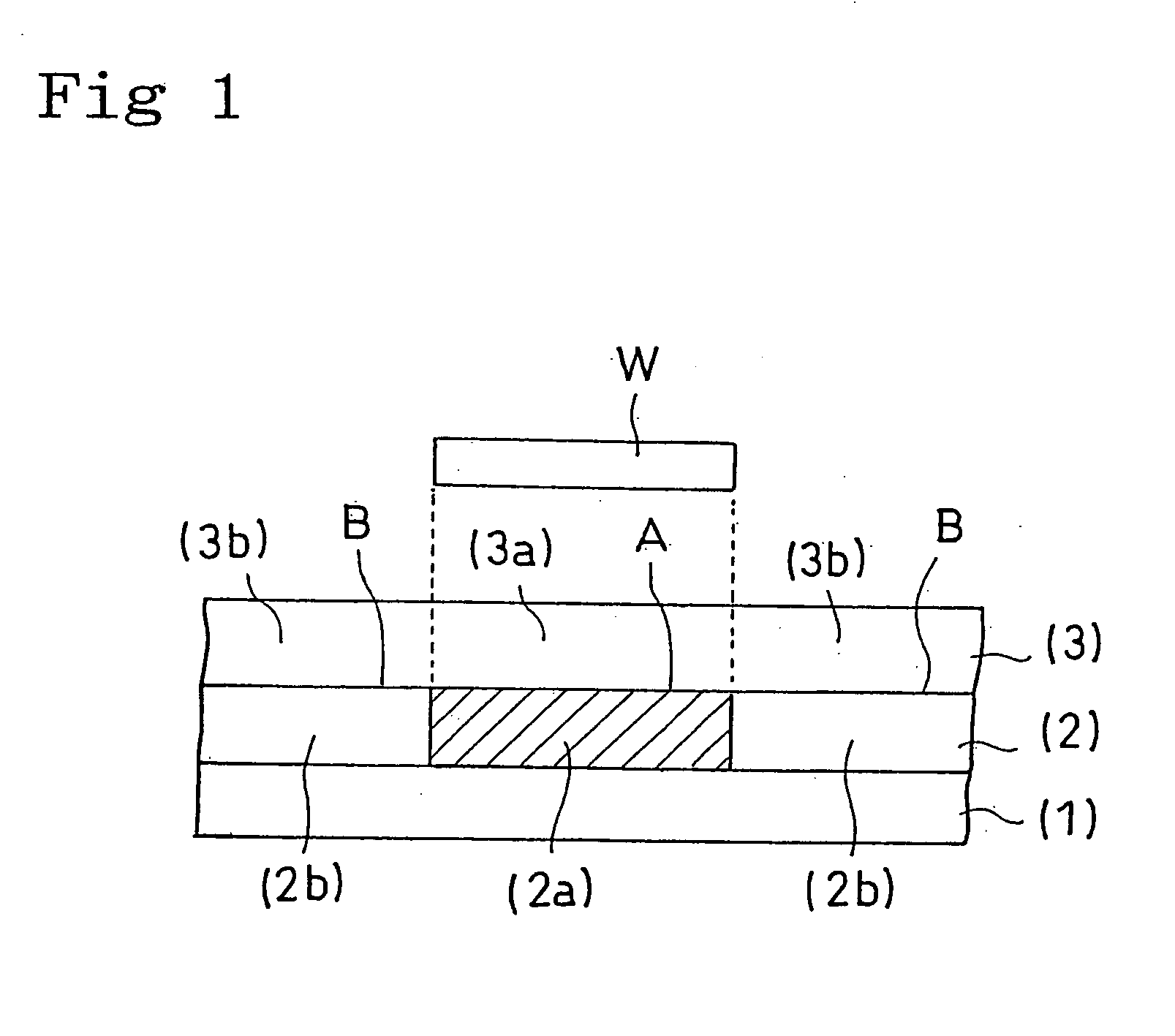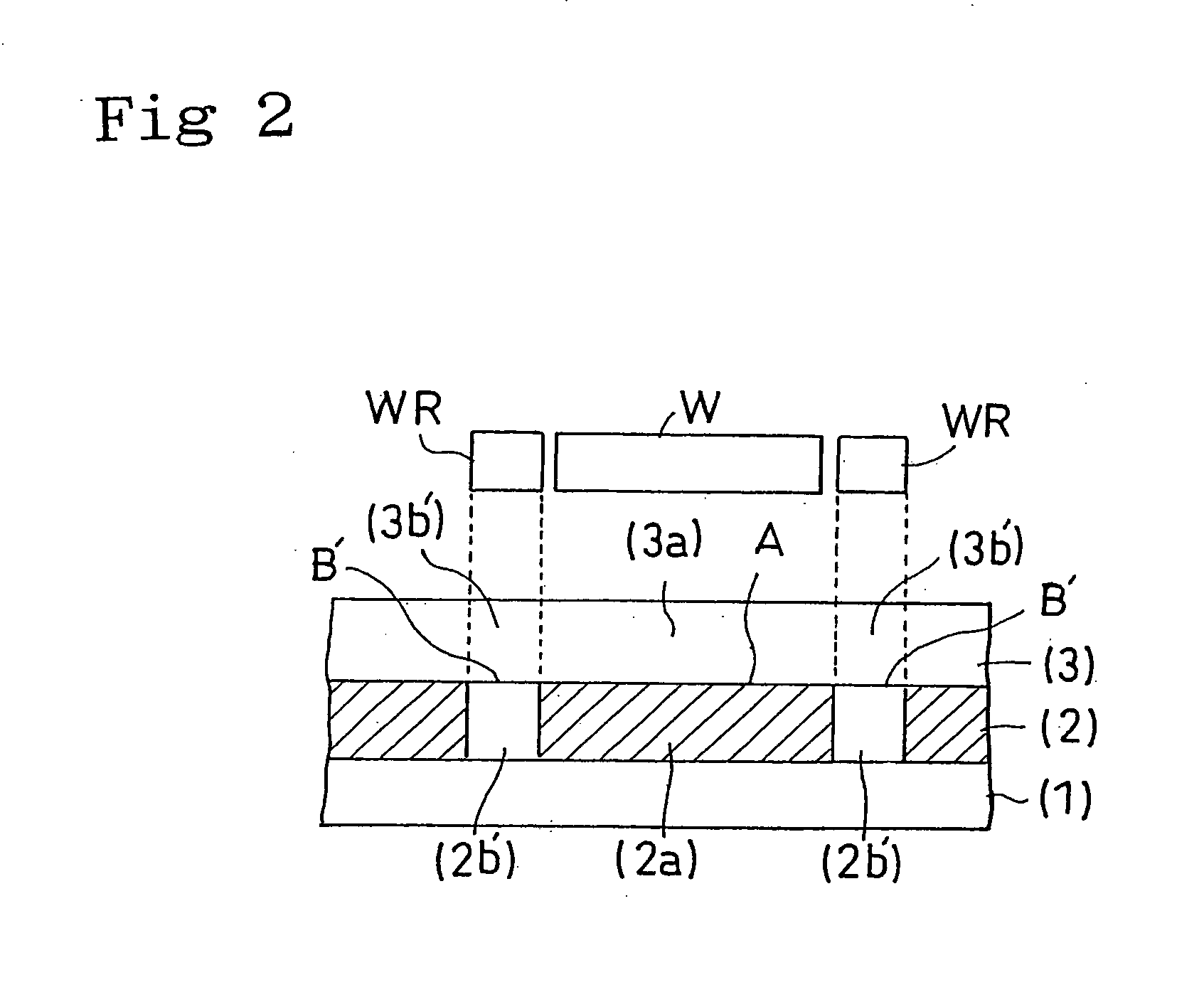Dicing/die-bonding film, method of fixing chipped work and semiconductor device
a chipped work and bonding film technology, applied in the direction of film/foil adhesives, chemistry apparatus and processes, transportation and packaging, etc., can solve the problems of difficult balance between the abilities, the uniform adhesive layer is hardly formed, and the application of the adhesive requires a special unit and a long time. , to achieve the effect of excellent balan
- Summary
- Abstract
- Description
- Claims
- Application Information
AI Technical Summary
Benefits of technology
Problems solved by technology
Method used
Image
Examples
examples
[0098] Hereinafter, this invention is described in more detail by reference to the Examples. In the following description, “parts” refers to parts by weight. For irradiation with ultraviolet rays, an ultraviolet (UV) irradiation unit (NEL UM-110 (Nitto Seiki Co., Ltd.) was used.
production example
Preparation of a Die-Bonding Adhesive Layer
[0099] The components shown in Table 1 below, that is, epoxy resin, phenol resin, acrylic rubber, silica and a curing accelerator were compounded in the ratios shown in the table to prepare compositions for die-bonding adhesives (A) to (C), and each composition was mixed with and dissolved in toluene. The mixed solution was applied onto a polyester film (separator) treated with a releasing agent. Then, the polyester film coated with the mixed solution was dried at 120° C. to remove the toluene, whereby each of the die-bonding adhesive layers A to C of 20 μm in thickness in the B-stage on the polyester film were obtained.
TABLE 1Die-bonding adhesive(parts by weight)CompositionsABCEpoxy resin (a1)24.924.915.5Epoxy resin (a2)24.924.915.5Phenol resin29.229.218Acrylic rubber202050Silica0100100Curing accelerator111
[0100] In Table 1, [0101] is bisphenol A type epoxy resin (epoxy equivalent, 186 g / eq.; viscosity, 10 Pa.s / 25° C.), [0102] is triphe...
example 1
Preparation of a Radiation-Curing Acrylic Pressure-Sensitive Adhesive
[0107] 70 parts of butyl acrylate, 30 parts of ethyl acrylate and 5 parts of acrylic acid were copolymerized in ethyl acetate in a usual manner to give a solution containing an acrylic polymer at a concentration of 30% by weight having a weight-average molecular weight of 800,000. 20 parts of dipentaerythritol monohydroxy pentaacrylate as a photopolymerizable compound and 1 part of α-hydroxy cyclohexyl phenyl ketone as a photopolymerization initiator were compounded with the acrylic polymer solution. The mixture was dissolved uniformly in toluene to prepare a solution containing a radiation-curing acrylic pressure-sensitive adhesive at a concentration of 25% by weight.
[0108] (Preparation of a dicing / Die-Bonding Film
[0109] The above radiation-curing acrylic pressure-sensitive adhesive solution was applied onto a polyethylene film of 60 μm in thickness as the supporting base material and dried to form a pressure-s...
PUM
| Property | Measurement | Unit |
|---|---|---|
| Fraction | aaaaa | aaaaa |
| Fraction | aaaaa | aaaaa |
| Fraction | aaaaa | aaaaa |
Abstract
Description
Claims
Application Information
 Login to View More
Login to View More - R&D
- Intellectual Property
- Life Sciences
- Materials
- Tech Scout
- Unparalleled Data Quality
- Higher Quality Content
- 60% Fewer Hallucinations
Browse by: Latest US Patents, China's latest patents, Technical Efficacy Thesaurus, Application Domain, Technology Topic, Popular Technical Reports.
© 2025 PatSnap. All rights reserved.Legal|Privacy policy|Modern Slavery Act Transparency Statement|Sitemap|About US| Contact US: help@patsnap.com



